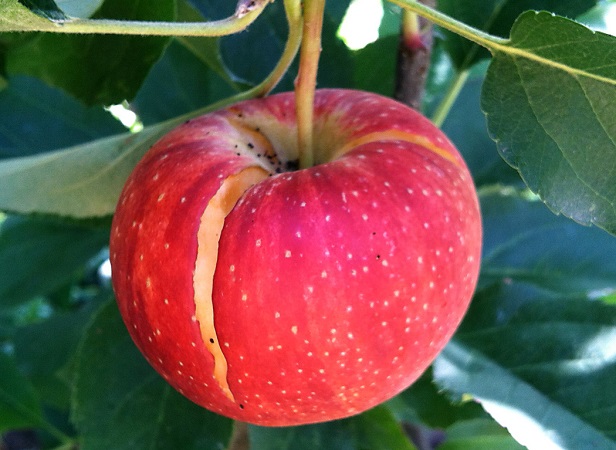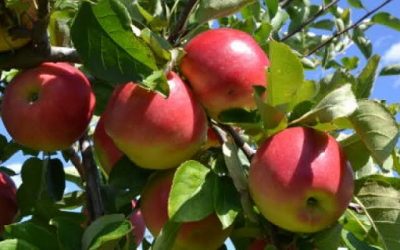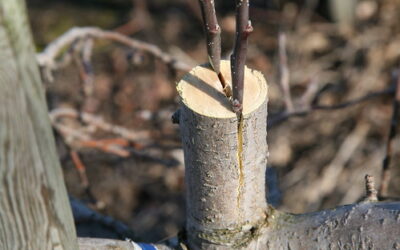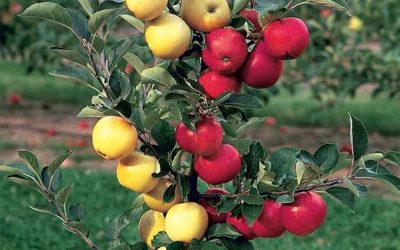Why do fruits crack?

A disorder where fruit surfaces crack mainly due to heavy irrigation or rain after long dry spell. This may occur due to varietal characters, orchard soil management, inappropriate levels of water at maturity stage, light, temperature and micro-nutrient deficiency.
It is generally found in apricot, apple, pomegranate, citrus, and nectarine etc. The average loss of fruit cracking ranges from 50-85 %. All cracked fruits loose their value for fresh market and they are used for processing only (especially for fruit juice) if they are not effected by fungus.
Cracked fruits are susceptible to storage disease, have shorter storage as well as shelf-life It is revealed that the shape of the fruit plays an important role in fruit cracking. Kidney and heart shape cultivars have deeper stem cavity and the rain drops can stay there for the longer time giving possibility for more water absorption through skin.
Causes of fruit cracking
There are many causes of fruit cracking which includes:
- The soil type and soil moisture condition of the fruit orchard
- Lack of orchard management
- The quality (volume) of rainfall at one time
- The full quantity and distribution of rainfall during the mature and ripening stage
- Genetically determined susceptibility of grown species and cultivar
Parts of cracking on fruit
There are the three different and well defined type of cracking
- Circular or semi-circular type of cracking around the stem and in the cavity
- Similar fine crack at the apical end of fruits
- Many often deep cracks on the side of fruit and it is called as later cracking
Types of cracking
Radical cracking: It develops from the radical part of the stem towards the fruit centre. Fruit of nectarine suffers from radiations or by sun rays and cracking take place. This type of splitting is found in nectarine
Concentric cracking: Concentric ring are found on fruit which leads to cracking it may in single fruit which is know as concentric e.g. cherries


